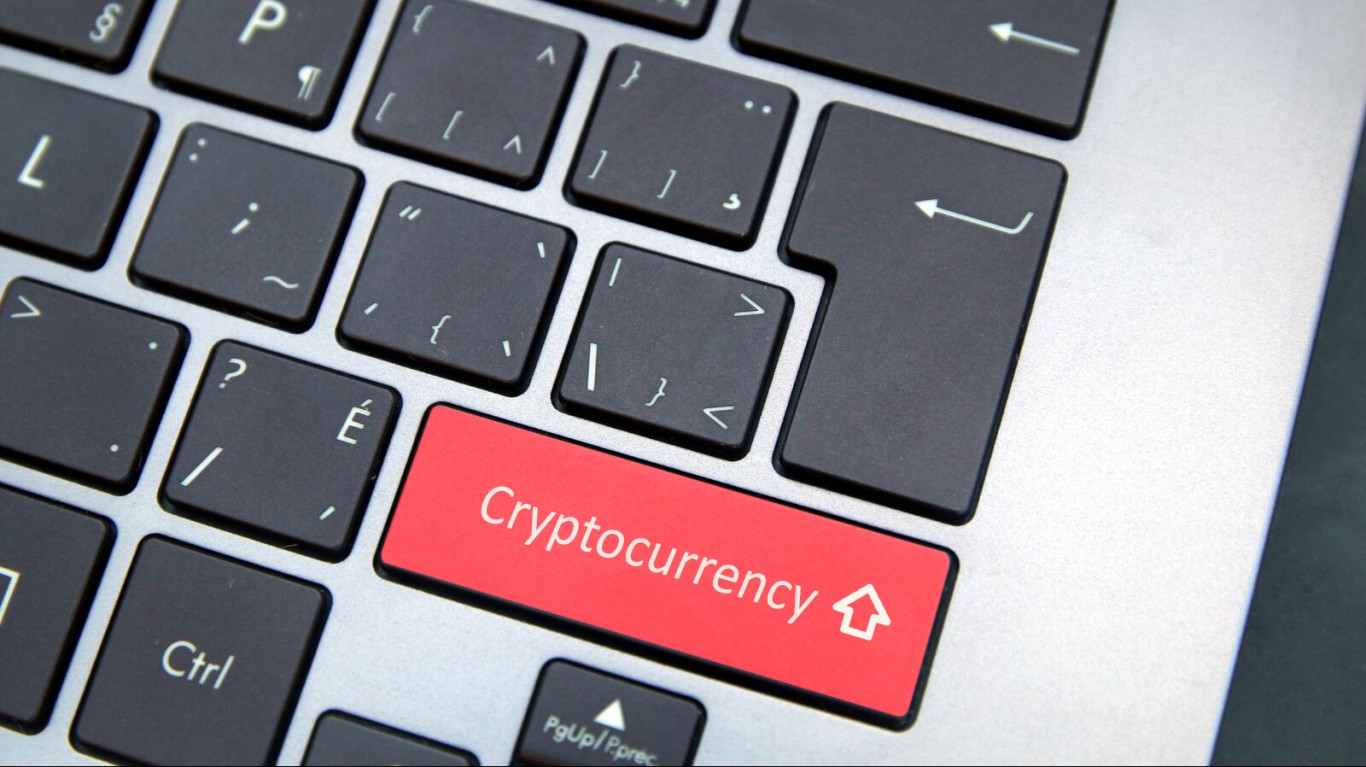Investing
These Were the 10 Worst Performing Cryptocurrencies in Q1 2022

Published:

By Aman Jain
No doubt 2021 was a great year for the crypto market, with many cryptocurrencies breaching their all-time highs last year. This year, however, has been a different story so far with some crypto markets doing exceptionally well and some struggling badly. Let’s take a look at the ten worst performing cryptocurrencies in Q1 2022.
We have used the return data from coinmarketcap.com to come up with the ten worst performing cryptocurrencies in Q1 2022. For our list, we have only considered cryptocurrencies with a market cap of more than $1 billion. Following are the ten worst performing cryptocurrencies in Q1 2022.
Launched in 2018, it is a decentralized storage network that offers a platform for the indefinite storage of data. Arweave uses AR to pay “miners” to indefinitely store the network’s information. Arweave is down almost 3% in the last 60 days and is presently trading around $31.16. It has an all-time high of $90.94 (November 2021) and an all-time low of $0.4854 (May 2020).
It was initially launched as Blockstack, but in Q4 2020 was rebranded to Stacks. Stacks aims to bring smart contracts DApps (decentralized applications) to Bitcoin. STX helps in executing smart contracts, processing transactions as well as registering new digital assets on the platform. Stacks is down over 24% in the last 60 days and is presently trading around $1.18. It has an all-time high of $3.61 (November 2021) and an all-time low of $0.04501 (March 2020).
Launched in 2011, it is a blockchain-based virtual world that enables users to develop, buy and sell digital assets in the form of a game, by bringing together NFTs (non-fungible tokens) and decentralized autonomous organizations (DAO). SAND is down almost 34% in the last 60 days and is presently trading around $2.81. It has an all-time high of $8.44 (November 2021) and an all-time low of $0.02894 (November 2020).
Launched in 2019, it aims to give players more control over games and in-game assets by making “blockchain games you’ll actually want to play.” Gala users can own NFTs (non-fungible tokens) to influence the governance of games. Gala is down almost 34% in the last 60 days and is presently trading around $0.2015. It has an all-time high of $0.8367 (November 2021) and an all-time low of $0.000151 (December 2020).
Launched in 2017, it is designed for developing decentralized crypto exchanges. Loopring combines centralized order matching with decentralized on-blockchain order settlement to bring the best of both centralized and decentralized exchanges. LRC is down over 3% in the last 60 days and is presently trading around $0.9148. It has an all-time high of $3.83 (November 2021) and an all-time low of $0.01986 (December 2019).
Launched in 2019, it is a DAG (directed acyclic graph) smart contract platform that offers DeFi (decentralized finance) services to developers. Fantom aims to address issues related to smart-contract platforms, such as transaction speed. FTM is down over 39% in the last 60 days and is presently trading around $1.17. It has an all-time high of $3.48 (October 2021) and an all-time low of $0.001953 (March 2020).
It facilitates the creation and use of DApps (decentralized applications). Harmony focuses on random state sharding to come up with innovative ways for decentralized applications to work. ONE is down almost 36% in the last 60-days, and is presently trading around $0.1195. It has an all-time high of $0.3798 (October 2021) and an all-time low of $0.001257 (March 2020).
It is a new digital collateral token that offers instant, verifiable assurances for all types of value transfer. Amp helps to quickly and irreversibly secure transactions for a range of asset-related use cases. AMP is down almost 27% in the last 60 days and is presently trading around $0.02327. It has an all-time high of $0.1211 (June 2021) and an all-time low of $0.0007946 (November 2020).
Launched in 2019, it is a self-sustaining, decentralized, blockchain-based network that supports an array of apps. Algorand’s primary objective is to speed up transactions and improve efficiency. ALGO is down over 20% in the last 60 days and is presently trading around $0.7292. It has an all-time high of $3.28 (June 2019) and an all-time low of $0.1024 (March 2020).
Started in 2019, it is a smart contract parachain on Polkadot that makes it easy to use popular Ethereum developer tools for Solidity projects. Moonbeam allows developers to use the tools and integrations they already use. GLMR is down almost 30% in the last 60 days and is presently trading around $3.63. It has an all-time high of $437.07 (January 2022) and an all-time low of $1.89 (February 2022).
Originally published at ValueWalk.
Thank you for reading! Have some feedback for us?
Contact the 24/7 Wall St. editorial team.